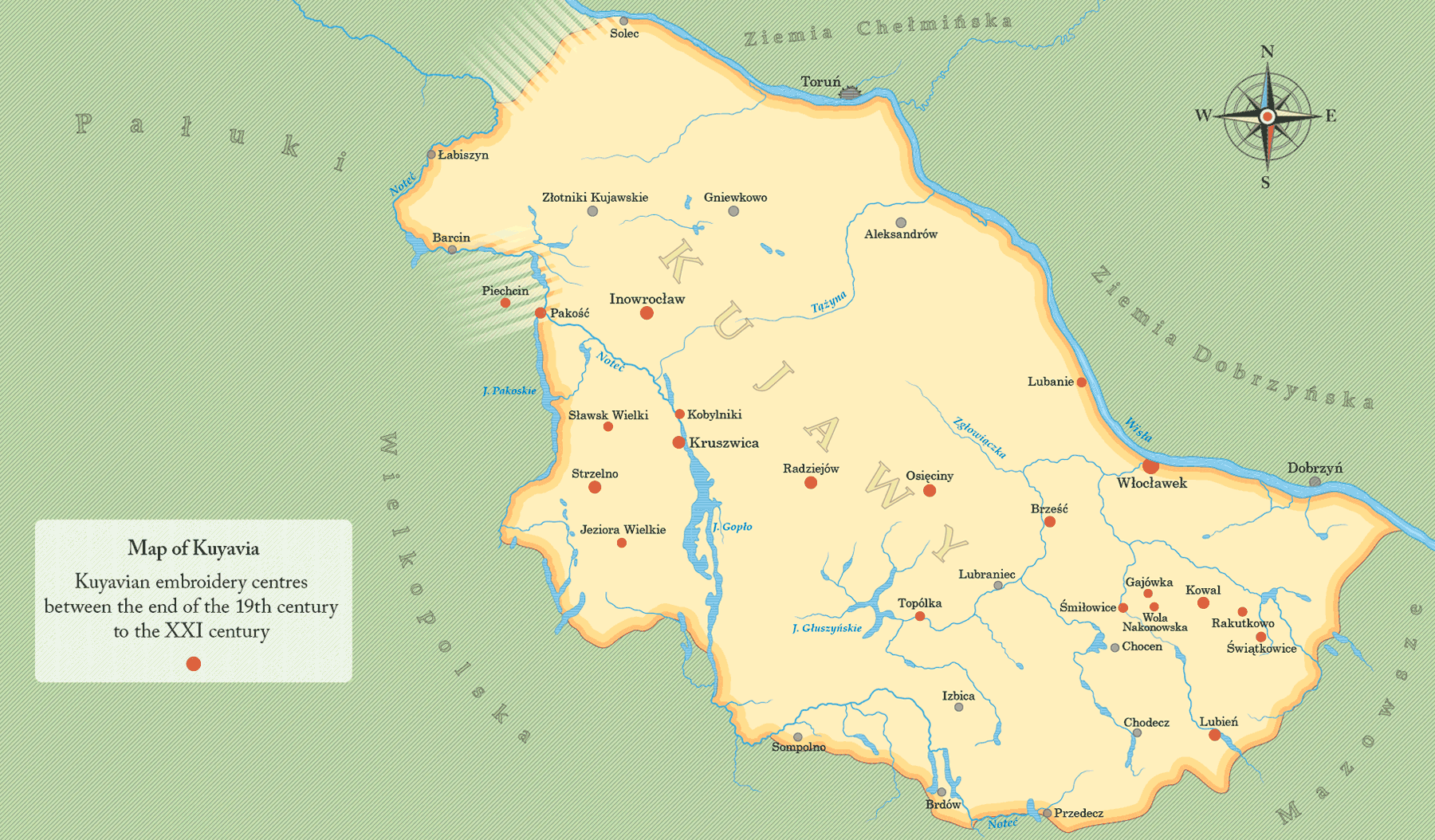
As in other ethnographic areas, embroidery in the Kuyavian region was originally used as a decoration of the traditional costume. Embroidery covered parts of woman’s outfit such as bonnets, ruffs, collars, aprons as well as white and red petticoats. Elements of man’s outfit have never been covered with embroidery. The Kuyavian costume developed most intensely during the period between 1850 and 1870. The costume was commonly worn till 1914 and after 1918 it started to fade.
Today, the Kuyavian costume is only worn during various holidays (e.g. Corpus Christi) and it is also worn by folklore bands and by folk artists. In the 1950s, Kuyavian embroidery was transferred onto new functional forms such as tablecloth, table runners and table napkins doilies made for various clients. Kuyavian embroidery is regarded as an independent branch of folk art and the ability to perform embroidery is an important part of intangible Kuyavian cultural heritage.
Nowadays, a large group of Kuyavian women can make embroidery. It is important that they transfer those skills to their family members and to the public during embroidery courses organised after 1945. Kuyavian embroidery is also spread through the publishing of stitch patterns as well as contests and exhibitions organised in the area of both East and West Kuyavia.
The oldest objects associated with Kuyavian embroidery include mainly bonnets. Such bonnets make part of the collections of the Maria Znamierowska-Prüfferowa Ethnographic Museum in Toruń and the Kuyavia and Dobrzyń Land Museum in Włocławek.
Film (fragment) Kuyavia from the series „Polish Dances – Retracing the Footsteps of Oskar Kolberg”, Volume 15, Rural Culture Foundation, Education Television


